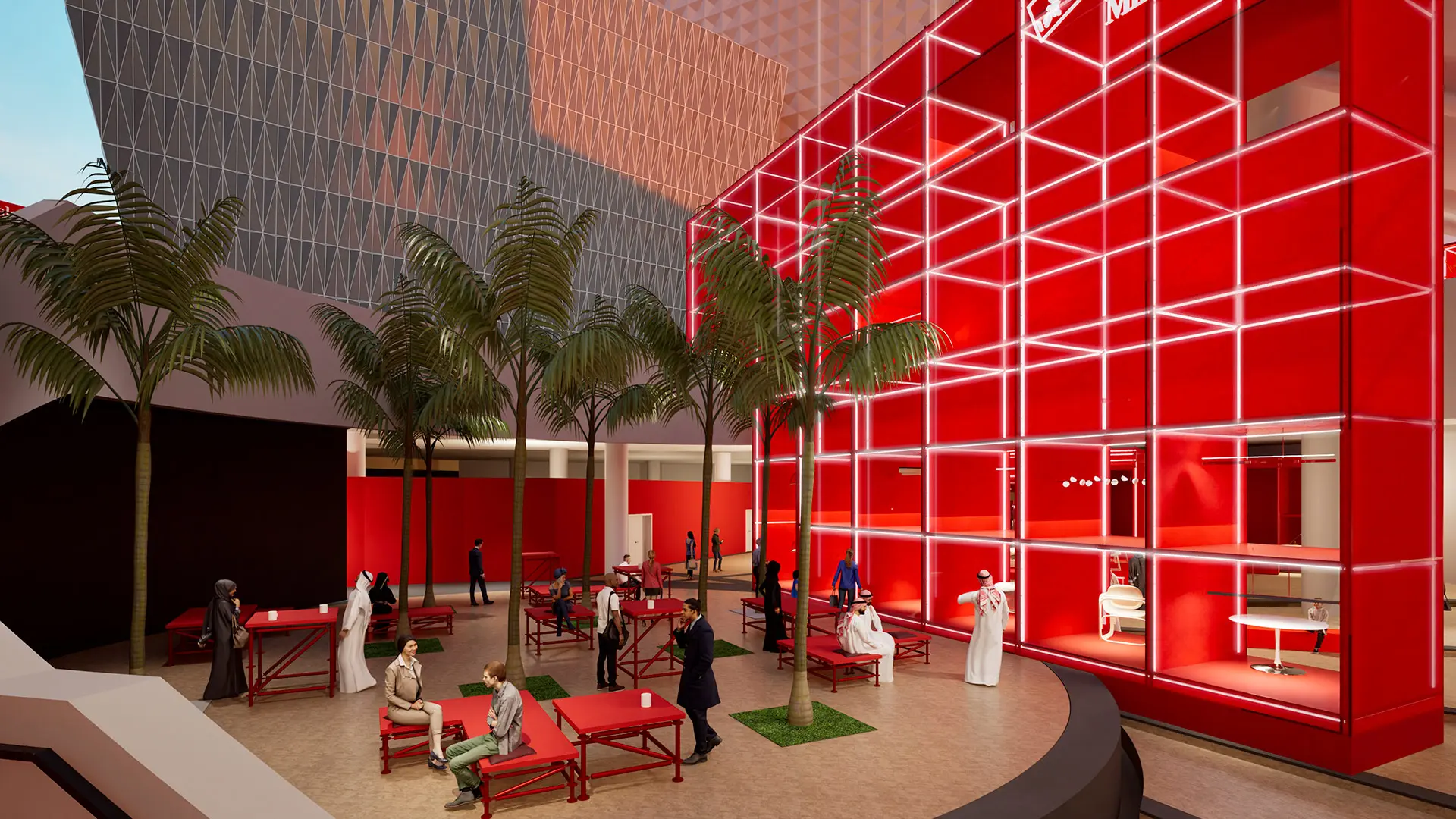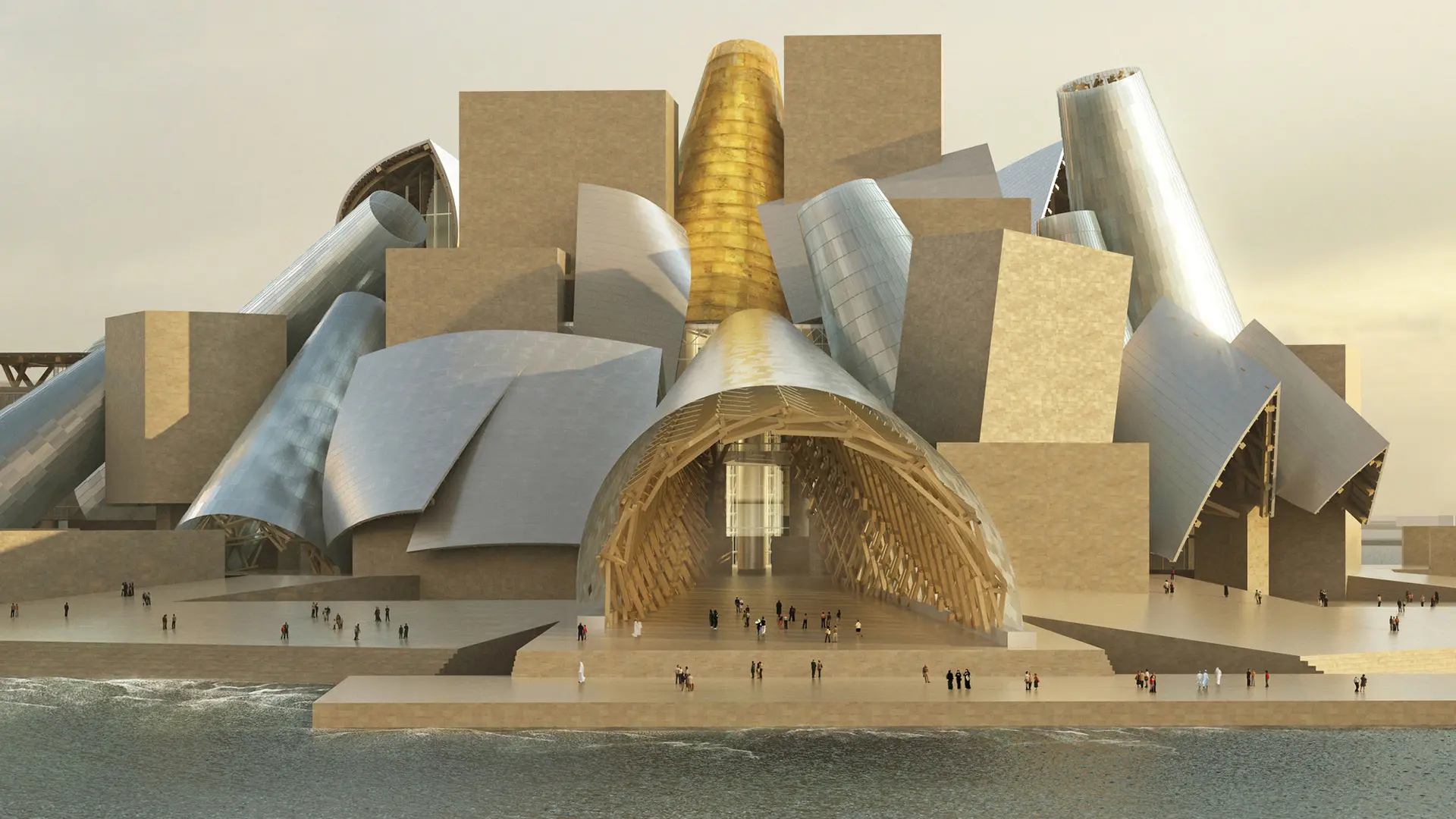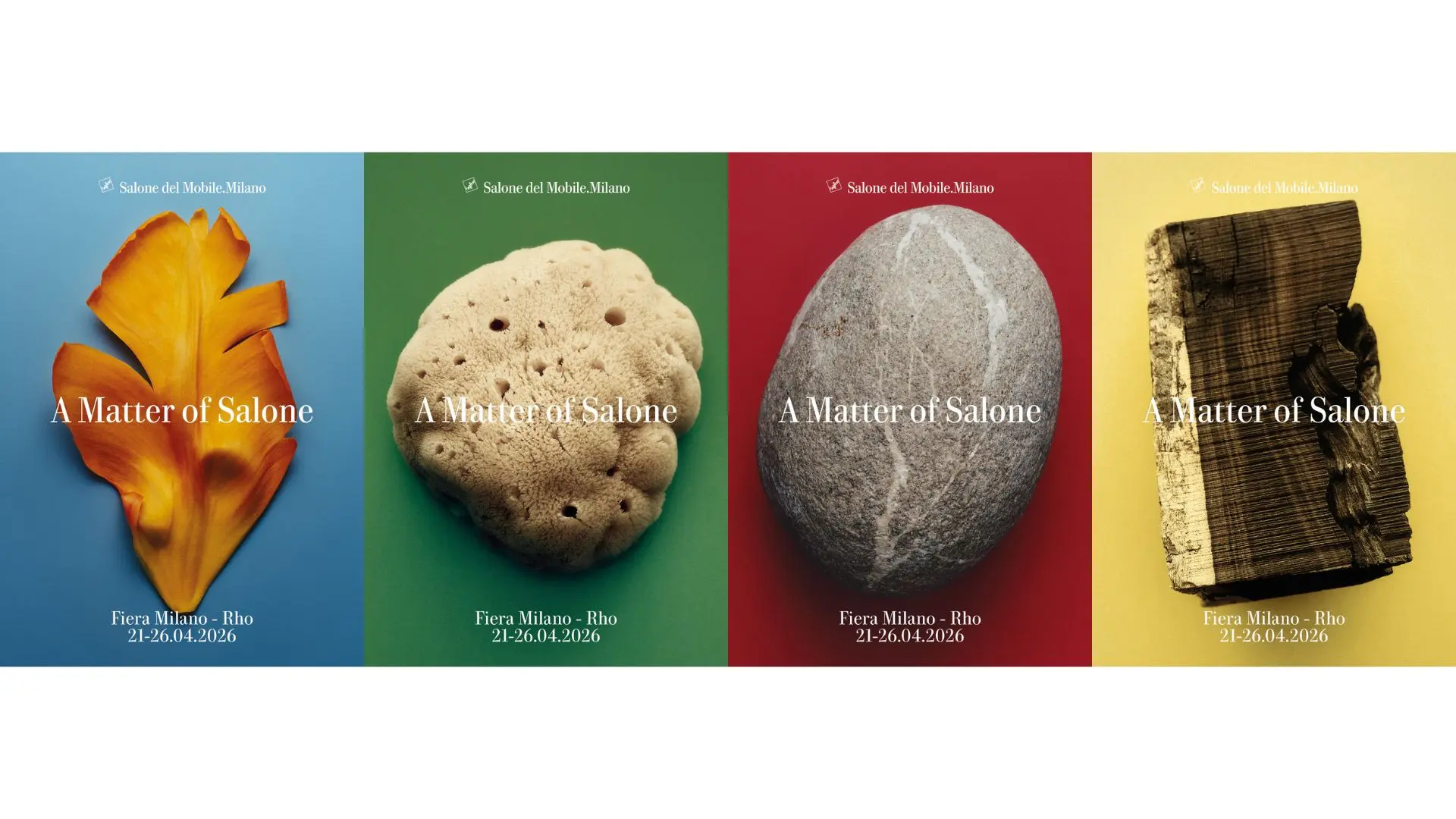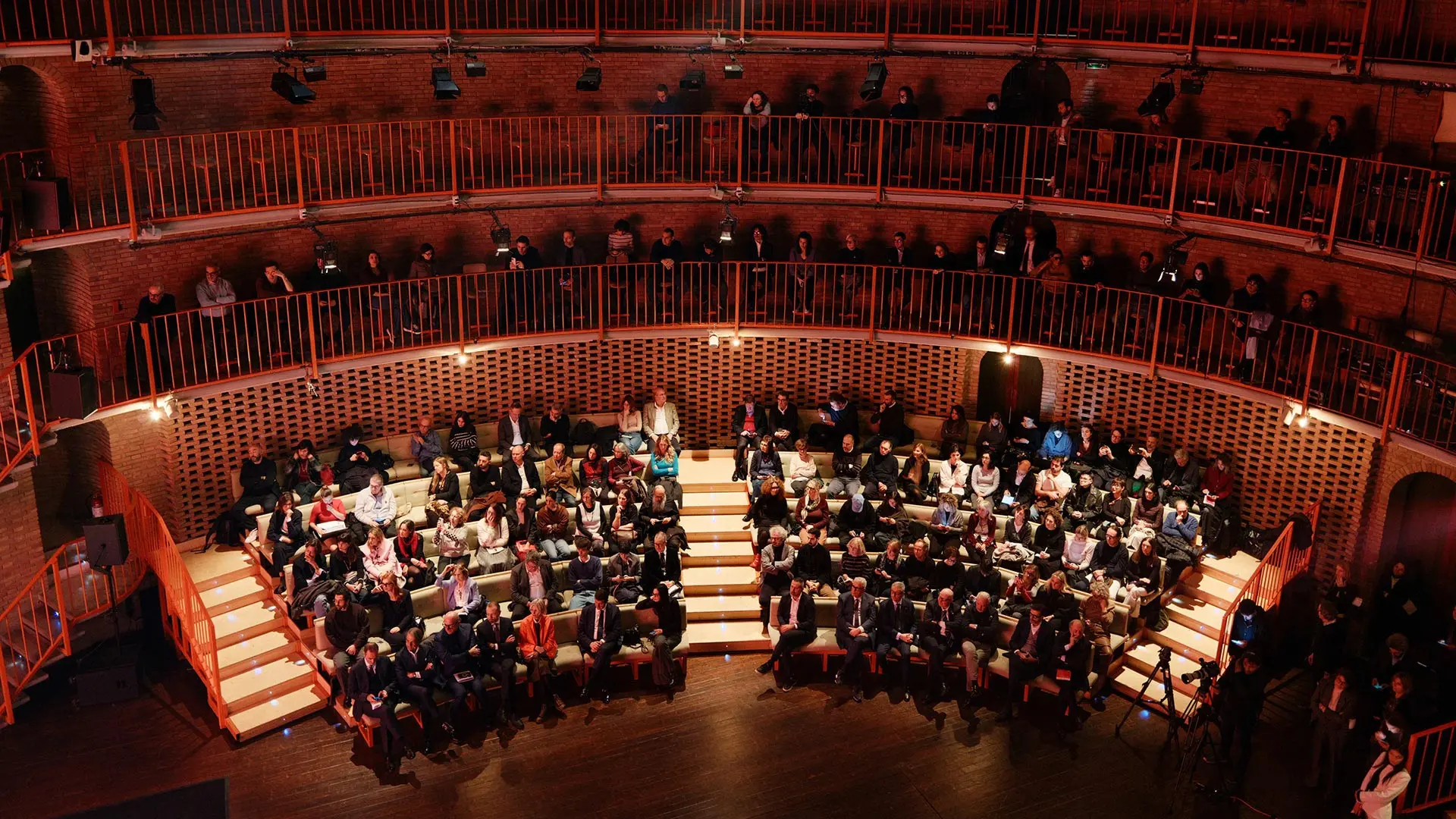From BIG to David Chipperfield, Frank Gehry to Snøhetta: a world tour of the best buildings set to open in 2026
Giò Forma: “Italian design combines extraordinary manufacturing and comprehensive visions”

Salone del Mobile.Milano meets Riyadh, rendering installation by Giò Forma - ©Studio Giò Forma
The studio that proclaims “everything is a stage” flies to Saudi Arabia to design the “Red in progress. Salone del Mobile.Milano meets Riyadh” installation. Interview with Florian Boje, co-founder of Giò Forma
Giò Forma knows how to design partitions, however you might define them, better than anyone else. The firm originated in the music industry when Cristiana Picco, Florian Boje, and Claudio Santucci met in the 1990s, backstage at the MTV studios. Since 1998 the three founding partners have worked together, transforming stages – from hugely popular singer-songwriter Vasco Rossi’s concerts to operas at La Scala – into highly engaging design shows. Over the years, their work has also expanded to include museum installations, fashion shows, and architectural projects, giving rise to memorable results such as the Tree of Life and the Italian Pavilion at Expo 2015.
These days, Giò Forma is working on a new project for Salone del Mobile in Saudi Arabia: “Red in progress. Salone del Mobile.Milano meets Riyadh” (November 26–28, 2025). This is Salone’s first exhibition adventure in the country, and also represents a springboard both for companies and for dialogue on the most relevant themes of design culture today. To discuss how Italian experience is being translated into a new continent, and how the narrative of Italian uniqueness can be reimagined to engage and excite, we reached out to Florian Boje in Riyadh for a phone interview.
Yes, it can capture our work. We usually use the expression “Everything is a Stage”, because we believe it truly mirrors what we do. Of course, in our definition we go beyond actual stages, referring to any surface or shape that allows us the opportunity to represent a story. After all, that’s something that has a lot to do with emotions. When we design a hotel, define a masterplan, or modify a landscape, every instance of architecture is, for us, a small stage: there is no application that cannot be included in this vision.
Red in Progress takes place at the heart of Riyad’s financial district. It borrows the aesthetics of a construction site, with metal tube scaffolding, to portray Italian design through a vertical exhibition. Today, Saudi Arabia is a construction site of ambitious projects. Around here you’ll often hear the phrase “re-engineering humanity”, which is nothing but an attempt to re-engineer people’s lifestyle and way of embracing contemporaneity. With Red in Progress, a construction site space turns into a cultural stage that comes to life with an intense programme of events, while Italian brands invade the square like a red river – visualised by a long fabric ribbon – and inundate the space with their furniture offering. Rather than adding scaffolding to renew a façade, we want to suggest a different perspective on a new way of living the future.
We’ve been working here for a long time, especially in the field of cultural buildings and hotels. Our projects include the building that hosted the first Islamic Arts Biennial in Jeddah (editor’s note: the Western Hajj Terminal at King Abdulaziz International Airport in Jeddah, home of the Islamic Arts Biennial) and the Maraya Concert Hall in AlUla. These are truly exceptional locations: AlUla, for example, was off-limits to visitors until recently, and that’s precisely why we’ve loved being part of its transformation journey. As Italian designers, we’re accustomed to leveraging places’ storytelling rather than razing everything to the ground.

Studio Giò Forma, from left: Florian Boje, Cristiana Picco and Claudio Santucci - Courtesy of Giò Forma
I believe that, when engineering lifestyle, Italian design offers not only extraordinary manufacturing capabilities, but also a device for comprehensive visions that are far removed from those of other countries. There is love for detail, high quality in every component, but also a vision of the value design can bring. Italy is the only country where, when you go to a restaurant, the waiter offers you the menu but also suggests a specific dish: it’s a recommendation you can’t ignore. We hear “I’ll take care of it” and immediately know we are doing the right thing if we accept. The same thing happens with design: quality Italian companies, at any level, are able not only to deliver products or solutions, but also to suggest the material, strategy, finish, or technique that will work best for a specific project. This – and I say it as a German person – is something only Italians know how to do.
Design, and especially Italian design, is often presented under constraints on very specific formats, primarily dictated by the trade fair system’s organisation. Do you see opportunities to evolve this language, to renew the experience? Perhaps towards greater audience inclusion and greater commercial appeal?
I’m not an expert in commercial strategies, but I believe there is opportunity in the ability to tell the story of furniture not only through its design but also through the environment that hosts it – the home – and the moments we experience within it. There’s tremendous value in designing a fair booth, but I think this format will need a new name in the long run: what we may call “stand” today will evolve into a small experience centre, focused on storytelling. After all, I believe our role is also to educate people on the great quality and intrinsic differences that can be found in Made-in-Italy products. Italian design has everything to gain from deepening its ability to convey its high-quality values to a wider audience.


 Stories
Stories








